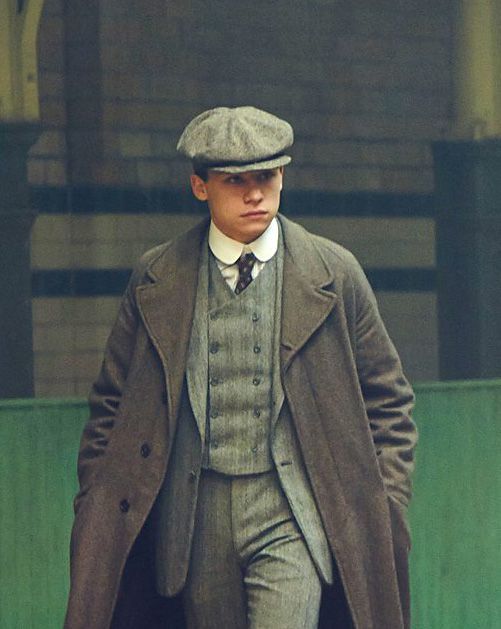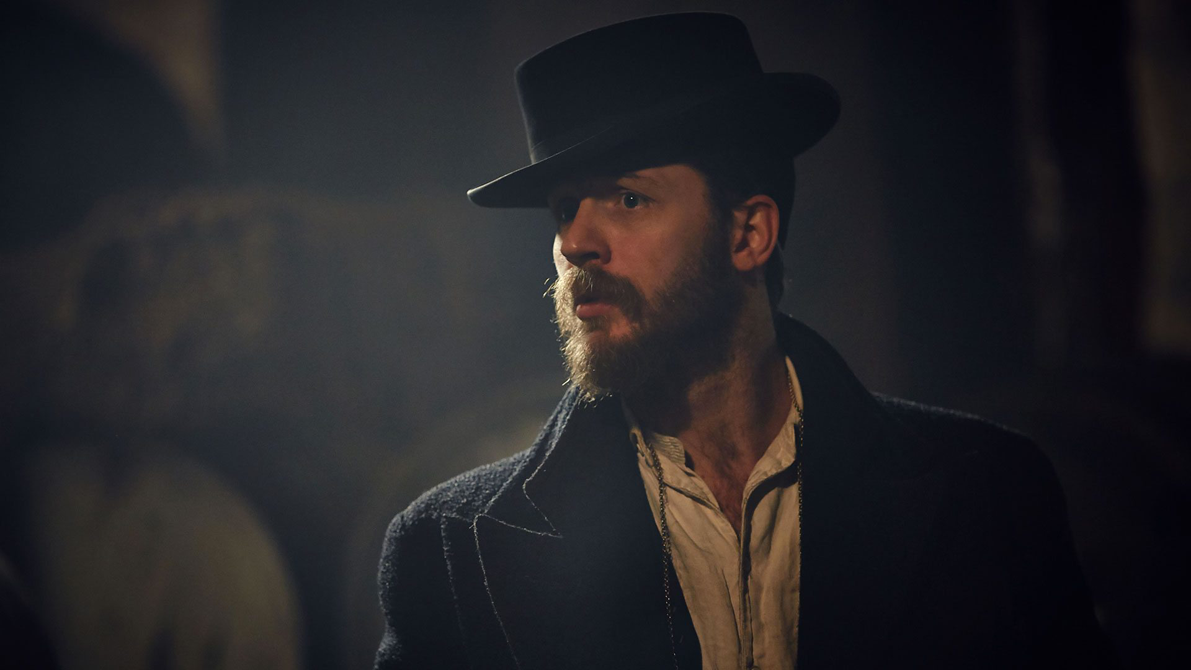- Messages
- 7,425
- Location
- METROPOLIS OF EUROPA
Agreed. Mix the cap styles up. And YES...the tieless collar look is odd.
Each to their own, I liked the establishing shot of the club scene, suddenly energy into something quite slow moving.
give me Harold Lloyd any day.
And the notion that three out of town gangsters could walk into a nightclub operated by, and filled with, members of a London gang and their associates, take them on and win the fight is just ridiculous. Annoyingly laughable. In the 1920s a nightclub with people openly having sex and taking cocaine would have had rather strict door controls - I doubt the Shelby family would have got past the doormen.
But it looks good.
HBK: I too get frustrated by portrayals of males in period drama. How many more times do we have to see men portrayed in a negative light. Where are all the good men? The normal men who work hard, don't beat their wife and are tolerant of all races, creeds and colours. To see the way men are portrayed in British period drama, you'd think they weren't massively influential in dragging the country forward through the middle part of the 20th century.
One final moan. The gypsy mysticism angle really grates on me.
But I'll keep watching it.
i noticed that too, but forgot to mention it.
British Edwardian caps were often very wide and far from droopy. they also commonly have the two-piece (circular edge seam)
construction rather than the eight-panel. more like this:

The show is called "Peaky Blinders" and is based on the real life and times of a Brummie gang called the Peaky Blinders (having razors in their cap peaks to slash and blind their enemy with) written by their great grandson, who owns the rights to the show. I guess all the elements you detest are sadly going to be in there. But bear in mind who and what this is about. "All creatures great and small" this is not. Aside from that I think the lighting is well done, the colour grading is of interest to me. The art direction 6/10. The use of Nick Caves track is sloppy. But for me the greatest sign is that international viewers are taking interest in the show and perhaps we can roll out a few more quality dramas particularly with the locations at our fingertips, the skill and talent of crews at Pinewood and Shepparton studios largely sitting on their hands. I would HBO a **** tonne of period series. But right now I'm looking at 1920's raincoats. Moving on.
nice outfit from episode 2:

Incidently, I noticed a stark difference with the Italians and their big, wide lapels in episode two... was that just a dramatic device to mark them out, or were the Italians already going wider like that as early as 1920? (Would make sense that in those days of a much bigger world, fashions varied more between countries / areas/ regions).
i wish i'd seen enough 1920-40s Italian suits to give an informed answer, but the suit forum is sorely lacking in the Italian department (we've certainly seen plenty of evidence of the Romanian fondness for wide lapels recently).
I watched last night's episode and noticed that, among the extras at least, there was a wider variety of cap styles than i had previously noticed. However, looking at the lead actors, their caps all appear to have the front stitched down. Was this normal at the time? i would have thought not.
I'm not sure about the caps but I thought Tom Hardy was very good. I thought the young victim with the polka dot bow tie had a bit of Stan Laurel about him.




 John Lofgren Monkey Boots Shinki Horsebuttt - $1,136 The classic monkey boot silhouette in an incredibly rich Shinki russet horse leather.
John Lofgren Monkey Boots Shinki Horsebuttt - $1,136 The classic monkey boot silhouette in an incredibly rich Shinki russet horse leather.  Grant Stone Diesel Boot Dark Olive Chromexcel - $395 Goodyear welted, Horween Chromexcel, classic good looks.
Grant Stone Diesel Boot Dark Olive Chromexcel - $395 Goodyear welted, Horween Chromexcel, classic good looks.  Schott 568 Vandals Jacket - $1,250 The classic Perfecto motorcycle jacket, in a very special limited-edition Schott double rider style.
Schott 568 Vandals Jacket - $1,250 The classic Perfecto motorcycle jacket, in a very special limited-edition Schott double rider style. This is a few episodes late, but did anyone happen to recognize the music playing in the background at Aunt Polly's birthday party at the Garrison? I've tried the shows BBC page, but that only lists the modern artists.

Is he wearing two overcoats?
I have to say this series is starting to increasingly irritate me. LAst week's attack on the nightclub was, as usual, ridiculous. Why are they so good at fighting and their enemies always so woeful?
LAst week's attack on the nightclub was, as usual, ridiculous.
the 'jazz age' dancers and extras in the club were poorly done too. far too modern in styling and attitude.